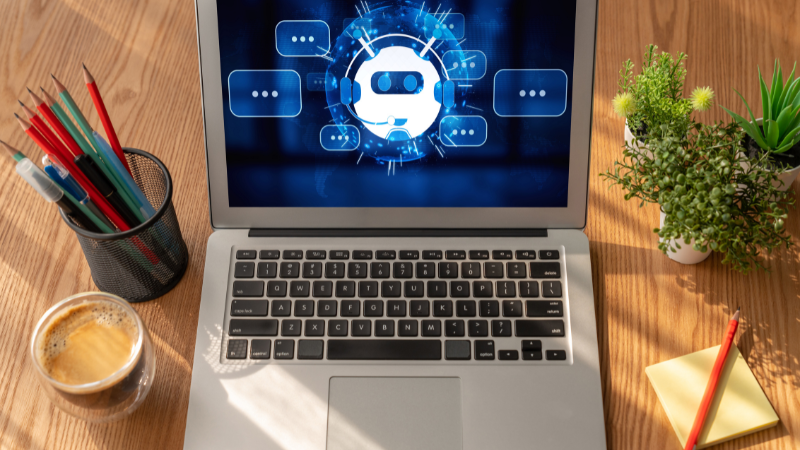
CHICAGO, July 7, 2025 — Everyone seems to be talking about artificial intelligence. But understanding the breakthrough technology is a different matter, as studies and anecdotal evidence readily attest. Even a member of President Trump’s Cabinet—the nation’s top education official, no less—wasn't aware the universal shorthand for the tech is AI (“eh-aye”), not A1, like the steak sauce.
For the benefit of food-away-from-home professionals who might have secretly sympathized with Education Secretary Linda McMahon, here’s an AI primer tailored to the business.
What is it?
In its simplest form, AI is the ability of machines to duplicate the recall, reasoning and information-processing of a human brain, but without human limits, including the time and effort needed to review virtually everything on the internet about a topic. Information that exceeds what a person can absorb in a lifetime is surveyed and crunched into useable intelligence in milliseconds.
In the food-away-from-home business, that means an AI application like ChatGPT or Google’s Gemini can be prompted to recommend a new dessert for the middle-school sector of the K-12 market. Those and other systems can survey everything on the internet that’s pertinent, including students’ preferences and how to keep the food cost below a set target.
Further prompts can pare down the options with lightning speed to possibilities that would take an R&D staff weeks or months to brainstorm. How old are the parents of the targeted students, and how is that cohort likely to react to what’s being offered to their kids? What presentation is most likely to turn heads? What option is the easiest to produce? What regional preferences should be reflected in the choice?
The AI agent “learns” from those additional prompts and narrows the search for the ideal recommendation.
But that’s a baby-steps example. The advanced capabilities are still being pioneered. Starbucks, for instance, has started using the tech to sequence orders so wait times are minimized. Drinks are drawn in the order they’re likely to be picked up, regardless of whether the customer ordered in person, via an app or at the drive-thru.
Distributors are wielding the technology to determine what should go where in their warehouses for maximum efficiency in loading trucks, whose routes are calculated to save time and fuel.
Marketers in all facets of the industry can ask for slogan suggestions, inputting everything about a new product or the targeted audience.
It’s like having an extra brain in a briefcase.
Generative vs. Agentic AI
Hardcore tech geeks have developed several sets of labels to signal what an AI agent can currently do and how the whole field is likely to evolve. Those designations, ranging from Narrow AI to Super Intelligent, are largely used by experts focused on the theoretical. FAFH pros likely need no finer breakdown than differentiating between Generative and Agentic AI, the two big categories of Narrow AI.
The former is familiar to anyone who’s “conversed” with a chatbot or asked Siri for the day’s weather forecast. The AI agent interprets the request and serves up the information. It could be the wait time for a table or when the lines at a gourmet food shop are likely to be shortest.
Chatbots are often the agents, and they’re not only assisting customers. Starbucks is testing an AI-driven virtual assistant that can provide advice to baristas on everything from drink recipes to management issues. The technology has been deployed to 35 stores.
Agentic AI goes the additional step of performing an action. If the temperature of a walk-in should spike beyond the acceptable level, Generative AI might ping a manager’s smartphone. Agentic AI would go ahead and adjust the thermostat. It’s the form that facilitates automation.
The technology is already in use as a means of answering consumers’ questions without human involvement.
What’s machine learning?
The outer limit of AI use in the FAFH industry, at least in the non-manufacturing side of the business, may well be machine learning, or AI’s ability to get smarter by analyzing data and function. At a simple level, an AI application might assess what a consumer orders on their app and recommend additional options that fit the shopper’s preferences.
A more advanced use might be identifying where a restaurant chain should open its next unit. Instead of the old siting methods of counting rooftops and looking at what sort of cars the locals tend to drive, AI can amass and analyze data for a sophisticated projection of where a new store will be successful. The assessment can pull in reams of information yet arrive at an informed recommendation in minutes or seconds.
Is tire-kicking possible?
The leap into AI can be intimidating. Industry events have become a way to get a test drive before committing. Next month’s Go2MarketEdge conference in San Francisco, for instance, includes a visit to the foodservice operations of University of California’s new San Francisco healthcare complex, where AI is in appreciable use.
Another component of the immersive event is The Edge Lab, where attendees can get a hands-on sense of what AI can do. (More information is available here. )
Is it really such a big deal?
Although there’s a consensus that AI will have a profound impact on the business world and every other facet of modern society, there’s a lack of unanimity about how.
For the implications with relevance to the FAFH business, we recently asked for an assessment from a leading authority: AI itself. Here’s how ChatGPT responded when we asked for specifics on how the industry will likely be affected, including the anticipated return on investment.
As Managing Editor for IFMA The Food Away from Home Association, Romeo is responsible for generating the group's news and feature content. He brings more than 40 years of experience in covering restaurants to the position.
Cover image courtesy: Closed Loop Project